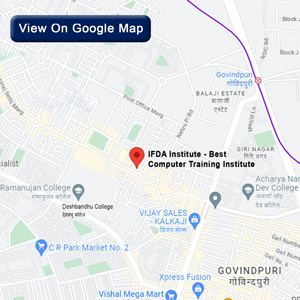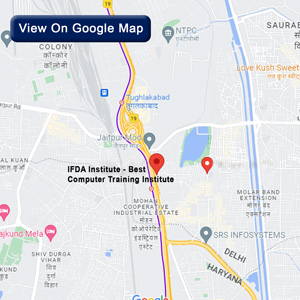Comparing Traditional Marketing And Digital Marketing

The Evolution of Marketing: Traditional vs. Digital
Marketing, one form or another, has been practiced for hundreds of years by almost every civilization known to man. From traders yelling about their wares in ancient marketplaces to clever TV jingles, the fundamental goal of marketing has always been the same: used to popularize a certain product with the aim of creating consumers.
Yet in terms of the practices that they apply for marketing purposes, these two practices have radically changed over the years with great influence of digital technology. This has led to two distinct categories of marketing that companies now utilize: offline marketing and online marketing.
Let us first understand what traditional marketing is
Offline marketing refers to any type of marketing that was practiced before the increased usage of the World Wide Web. Some prime examples include:
The other qualitative aspects in the broad category of print media ads are newspaper, magazine, and billboard ads. TV and radio advertising Direct marketing communication: This is the use of flyers, catalogs, or even post cards to reach the customers. Telemarketing: sales promotion by telephone Trade shows and events Selling by cold calling the businesses and making them aware of the new leads available for sale.
These traditional formats were the order of the day in the marketing arena for the most part of the 20th century. Most of them are still used today, together with the modern form of communication technology.
Advantages of Traditional Advertising
When used effectively, traditional marketing has some advantages, including:
Wider coverage: Some channels, such as television or billboards, have the ability to get your brand out there to the masses. According to Nielsen data, nearly 10 out of 10 households still tune into broadcast television. Trust and authority: It is believed by consumers that brands they see on television or read about in newspapers are genuine. Building the brand: You get to see your brand over and over through offline marketing, which enhances brand recall. Programmed advertisement is not, however, without some clearly distinguishable drawbacks of traditional approaches to advertisement placement.
Disadvantages of Traditional Marketing
Loosely targeted and measured: You cannot easily direct the visibility of your messaging to the targeted audience and keep track of the interactions/conversions. High cost: Investing in such media as TV, radio, and newspaper advertisements can be so costly for a business, particularly a small one. Clutter: Consumers pay little or no attention to the overwhelming number of conventional forms of communication they come across. Lead generation: it might take a long time to get a response once a potential client has been reeled in through a print or direct mail ad.
This is why more and more companies have focused their activities on DM activities within the last 10-15 years.
What is digital marketing?
Digital marketing can be described as any marketing communication that occurs primarily on the internet. Some prime examples include:
A type of internet marketing: web optimization, or more commonly referred to as:-
- search engine optimization (SEO)
- Further, there is pay-per-click (PPC) advertising.
- Content marketing
- Social media marketing
- Email marketing
- Affiliate marketing
Based on over 4 billion people who are accessing the internet daily and continue to do so, the digital media platform gives marketers the greatest opportunities of reaching a large pool of consumers. More to the point, digital marketing enables businesses to get in touch with prospective clients with significantly greater accuracy.
Benefits of Digital Marketing
Here are some major upsides to focusing on digital marketing:
Highly targeted: Depending on your needs, ‘price targeting’ can be refined with advanced analytics and targeting possibilities that enable you to ‘pinpoint’ specific buyer subgroups. Measurable results: detailed analytics ensure that you are able to track all your marketing key performance indicators online accurately without replacement.
Targeted delivery—reaching one million people with information in a Facebook advertisement is cheaper than a prime-time television advertisement.
Improved customer satisfaction: consumers desire that their interactions with firms when gathering information and accessing products and services online are smooth. It has the ability to turn visitors into customers—when done right, digital marketing makes customers out of visitors more often. For instance, while email marketing has an approximate conversion rate of 20%, print media advertising has only about 1-2% conversion.
Of course, digital marketing has potential pitfalls as well
With that said, the following are some of the disadvantages or downfalls of digital marketing, as follows:
Oversaturation: Advertising over the internet is definitely overfilled, and it is really hard to find a way to make the brand pop up from the crowd.
Fluctuation: There is constantly a new digital marketing channel or new tactics in digital marketing. Unfortunately, it’s quite challenging for brands to be topical.
Risks associated with data acquisition and management: Acquiring and managing consumers’ data may present numerous safety concerns that may need a lot of investment in security.
Inexperienced audience: Your marketing department may have little experience with digital marketing. In most cases, choosing a digital marketing agency is wise, as I explain below.
Thereby, which of them is more suitable for the modern brand?
Here are some major upsides to focusing on digital marketing:
The fact is that none of the traditional and none of the new digital methods carries all the solutions today. So the brands that get good results in this environment are those who use a win-win, strategically extended omni-channel approach.
Now imagine customers’ buying process. Organic search, social media, paid social, and Google Display Network all target people during the research phase, which is when they are actively searching for solutions online. But as consumers get closer to the decision-making process, they seek more traditional modes of communication, such as direct mail.
Smart marketing strategists design campaign efforts that provide prospects with a smooth flow from virtual to real and back. This way of thinking and structuring the promoting process is twofold and permits to increase visibility and conversion rates on every step.
In the marketing environment, the change is also expected to remain at a high pace in the future as well. However, this research believes that brands that effectively coordinate offline and online strategies have a higher probability of reaching the targeted audience, leveraging rivals, and sustaining themselves in the long run. Such risky communications require a combination of trial and error through introducing innovation into the continuing communication campaign and basic quantitative results to measure the success of the campaigns.
Indeed, although many used to believe that traditional marketing had lost its position for good long ago, it appears to be far from dead. Offline media is not obsolete because digital has brought new opportunities, but offline media has its benefits. The formula winning these days most definitely combines elements of both worlds.
Hence, instead of implying that members are distinct opponents to be vanquished, smarter marketers take time to seek cooperation between the ‘traditional’ and ‘new’ marketing departments, quickly deeming the latter the true authentic holder of the former’s power. This is true because consumers cannot confine themselves to either one channel or the other. Your messaging shouldn’t either be based on this information. Go to them at any stage they are in the buying process.









